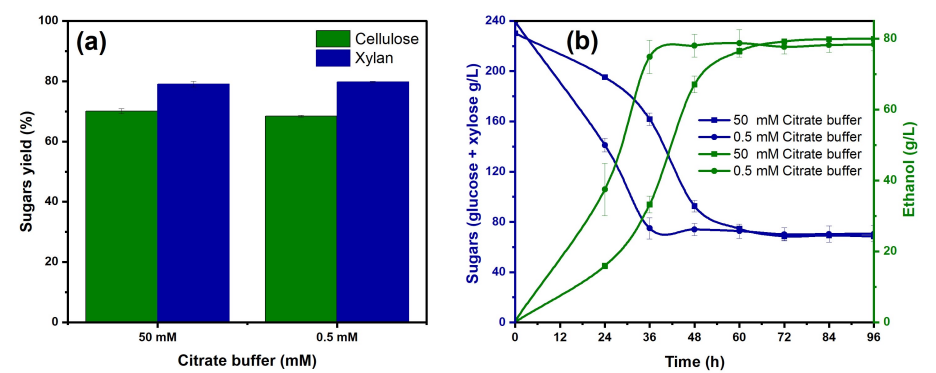A Chemical-Free Pretreatment for Biosynthesis of Bioethanol and Lipids from Lignocellulosic Biomass: An Industrially Relevant 2G Biorefinery Approach
Themes: Conversion
Keywords: Hydrolysate, Lipidomics
Citation
Deshavath, N.N., Dien, B.S., Slininger, P.J., Jin, Y.S., Singh, V. Dec. 21, 2022. “A Chemical-Free Pretreatment for Biosynthesis of Bioethanol and Lipids from Lignocellulosic Biomass: An Industrially Relevant 2G Biorefinery Approach.” Fermentation 9(1), 5. DOI: 10.3390/fermentation9010005.
Overview

A wide range of inorganic and organic chemicals are used during the pretreatment and enzymatic hydrolysis of lignocellulosic biomass to produce biofuels. Developing an industrially relevant 2G biorefinery process using such chemicals is challenging and requires more unit operations for downstream processing. A sustainable process has been developed to achieve industrially relevant titers of bioethanol with significant ethanol yield. The pretreatment of sorghum biomass was performed by a continuous pilot-scale hydrothermal reactor followed by disk milling. Enzymatic hydrolysis was performed without washing the pretreated biomass. Moreover, citrate buffer strength was reduced to 100-fold (50 mM to 0.5 mM) during the enzymatic hydrolysis. Enzymatic hydrolysis at 0.5 mM citrate buffer strength showed that significant sugar concentrations of 222 ± 2.3 to 241 ± 2.3 g/L (glucose + xylose) were attained at higher solids loadings of 50 to 60% (w/v). Furthermore, hydrolysates were fermented to produce bioethanol using two different xylose-fermenting Saccharomyces cerevisiae strains and a co-culture of xylose-fermenting and non-GMO yeast cultures. Bioethanol titer of 81.7 g/L was achieved with an ethanol yield of 0.48 gp/gs. Additionally, lipids were produced using the oleaginous yeast Rhodosporidium toruloides, yielding 13.2 g/L lipids with cellular lipid accumulation of 38.5% w/w from 100 g/L of sugar concentration. In summary, reducing the strength of the citrate buffer during enzymatic hydrolysis and omitting inorganic chemicals from the pretreatment process enhances the fermentability of hydrolysates and can also reduce operating costs.
Data
- Glucose/Xylose Yields
- Sugar Utilization
- Lipid Production